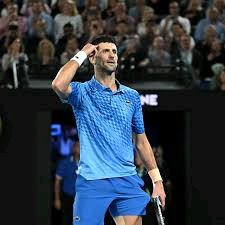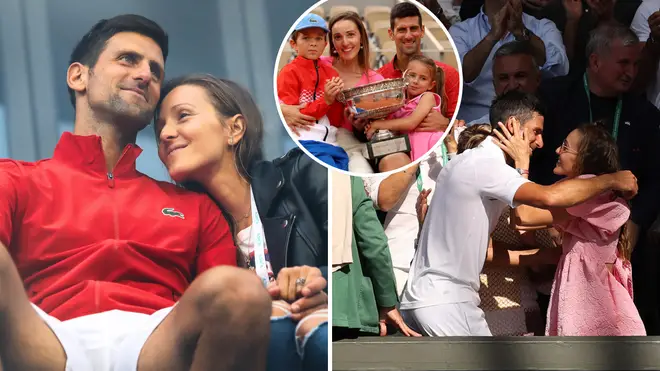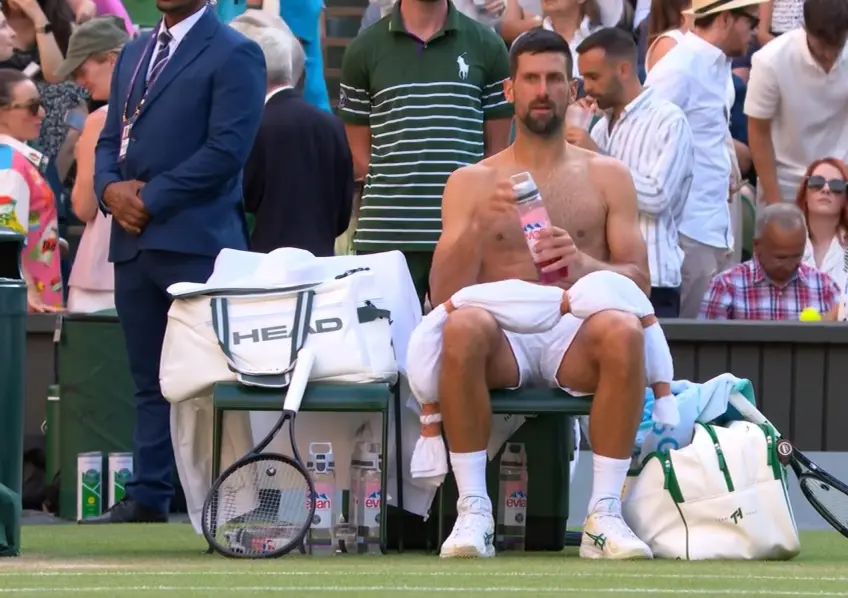**Alexander Zverev Makes ‘Hitting Harder’ Claim as He Compares Carlos Alcaraz and Jannik Sinner to the ‘Big 3’**
In the rapidly evolving world of professional tennis, few players have captured the imagination and attention of fans and analysts quite like Alexander Zverev. The German prodigy, renowned for his powerful groundstrokes and athletic prowess, has recently made headlines with a bold assertion: that emerging stars Carlos Alcaraz and Jannik Sinner are elevating the sport to a new level, comparable to the legendary ‘Big 3’—Roger Federer, Rafael Nadal, and Novak Djokovic. Moreover, Zverev’s comments about their aggressive style of play, particularly their “hitting harder,” have sparked widespread debate about the future landscape of men’s tennis.
This article delves deeply into Zverev’s claims, analyzing the context of his comments, the qualities that distinguish Alcaraz and Sinner, and how they might reshape tennis in the coming years. We will explore their playing styles, recent performances, and the broader implications of his comparison to the ‘Big 3,’ as well as the significance of the “hitting harder” narrative.

—
The Rise of the New Generation: Alcaraz and Sinner
Over the past few years, tennis has witnessed a remarkable influx of talented young players challenging the established hierarchy. Among them, Carlos Alcaraz and Jannik Sinner have emerged as two of the most promising and exciting prospects.
**Carlos Alcaraz:**
The Spanish sensation, born in 2003, burst onto the scene with a combination of athleticism, shot-making ability, and mental toughness that belies his age. His aggressive baseline game, characterized by heavy topspin, quick footwork, and fearless shot selection, has earned him multiple ATP titles, including his historic breakthrough at the US Open in 2022, where he became the youngest No. 1 in ATP history. Alcaraz’s style is marked by relentless attacking from the baseline, often hitting winners from seemingly impossible positions, and his ability to adapt to various opponents makes him a formidable player.
**Jannik Sinner:**
The Italian prodigy, born in 2001, has been lauded for his mature game, exceptional court coverage, and powerful groundstrokes. Sinner’s game is characterized by a smooth, fluid motion, and an impressive ability to generate pace with minimal effort. His mental composure and tactical intelligence allow him to outthink opponents, while his willingness to hit big from the baseline contributes to his reputation as an aggressive, yet controlled, player. Sinner’s rise has been marked by consistent improvements across surfaces, and his potential to contend for Grand Slam titles is widely recognized.
Zverev’s Perspective: “Hitting Harder” and the Comparative Analysis
In recent interviews and social media posts, Alexander Zverev has expressed admiration for the way Alcaraz and Sinner are shaping the future of tennis. His comments, notably about their aggressive hitting and style, have drawn attention for their boldness.
**“They’re hitting harder now,”** Zverev stated in a recent press conference. “The game has become more aggressive. These guys don’t just play to rally; they go for the winners from the first ball. It’s exciting to watch, and I think it raises the level of the sport.”
He elaborated further, emphasizing the physicality and power displayed by the younger generation:
> “Alcaraz and Sinner are not afraid to take risks. They’re hitting harder, playing more aggressively than maybe some of the guys before. That’s what makes them special. They’re pushing the boundaries of what’s possible on the court.”
**Comparing to the ‘Big 3’:**
Zverev drew a parallel between these rising stars and the legendary trio of Federer, Nadal, and Djokovic, who dominated the sport for over a decade. While the ‘Big 3’ were known for their consistency, tactical intelligence, and mental resilience, Zverev suggests that Alcaraz and Sinner are bringing a new, more aggressive flavor to tennis.
He said:
> “The ‘Big 3’ changed the game with their consistency and defense, but now we see players who are more aggressive, hitting harder and taking control early. I think in a few years, people will see that Alcaraz and Sinner are the faces of tennis, just like the ‘Big 3’ once were.”
The Significance of “Hitting Harder”: Evolution or Revolution?
Zverev’s emphasis on “hitting harder” raises an important question: is this a natural evolution of the sport, or a revolutionary shift that will redefine tennis’s style and strategy?
**The Evolution of Power in Tennis:**
Historically, tennis has seen a gradual increase in power and athleticism. From the serve-and-volley dominance of the 1980s to the baseline power game of today, players have continually adapted to technological advances in racquets and strings, as well as training methods. The modern game favors aggressive baseline play, with players like Andy Roddick and Juan Martín del Potro exemplifying powerful games before Alcaraz and Sinner.
**The Rise of Aggression and Power:**
Alcaraz and Sinner represent the latest iteration of this trend. Their emphasis on hitting harder reflects a desire to shorten points, impose dominance early, and dictate play from the outset. This approach aligns with the contemporary style seen in other sports, where athleticism and raw power often outweigh tactical patience.
**Implications for the Sport:**
This shift towards more aggressive hitting could lead to faster, more dynamic matches, but also raises questions about the longevity and consistency of such playing styles. Power-based tennis can be more physically demanding, increasing the risk of injuries and mental fatigue. It also challenges traditional notions of patience and tactical variation.
Comparing the ‘Big 3’ and the New Generation: Similarities and Differences
While Zverev’s comparison is optimistic, it warrants a nuanced analysis of how these players truly measure up to the ‘Big 3.’
**Similarities:**
– **Youthful Breakthroughs:** Both groups made early impacts on the tour, winning titles at a young age.
– **Power and Athleticism:** The new generation’s emphasis on power and athleticism echoes the physical dominance of the ‘Big 3’ in their prime.
– **Mental Toughness:** Alcaraz and Sinner have demonstrated resilience and composure in high-pressure situations.
**Differences:**
– **Experience and Consistency:** The ‘Big 3’ accumulated decades of experience, winning multiple Grand Slams, and establishing mental resilience that often separated them from the pack.
– **Tactical Mastery:** Federer, Nadal, and Djokovic excelled in tactics, adaptability, and strategic patience—areas where the new generation is still developing.
– **Surface Versatility:** The ‘Big 3’ excelled across all surfaces, while Alcaraz and Sinner, though versatile, are still refining their games on all terrains.
**Future Outlook:**
While the new stars show immense promise, their trajectory will depend on their ability to develop tactical intelligence, consistency, and mental resilience — qualities that defined the ‘Big 3.’ Zverev’s optimism is shared by many, but the path to their dominance remains to be fully realized.
The Broader Impact on Men’s Tennis
Zverev’s comments reflect a broader shift in tennis’s landscape, emphasizing athleticism, power, and aggressive play. This evolution influences coaching, training, and fan engagement.
**Training and Development:**
Young players are now focused on developing explosive strength, speed, and shot-making ability. Coaches are adopting more specialized training regimes to enhance power and athleticism.
**Fan Engagement:**
Spectators are drawn to high-octane rallies and spectacular winners, leading broadcasters and tournaments to favor aggressive styles of play.
**Technological Influence:**
Advancements in racquet technology and string materials have enabled players to generate more power with less effort, facilitating this “hitting harder” approach.
A New Era or Continuation of a Trend?
Alexander Zverev’s assertion that Alcaraz and Sinner are “hitting harder” and comparable to the ‘Big 3’ captures a fascinating moment in tennis history. It underscores the sport’s ongoing evolution, driven by emerging talent, technological advancements, and changing strategic paradigms.
While these young stars are undoubtedly pushing the boundaries of power and aggression, whether they can replicate the consistency, tactical mastery, and mental resilience of Federer, Nadal, and Djokovic remains to be seen. Their rise heralds an exciting future, blending the old with the new, and promising a more dynamic, fast-paced era of men’s tennis.



